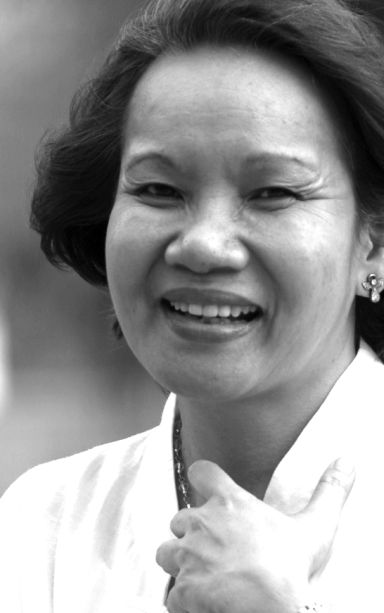
LOGARTA
Let us celebrate Chinese New Year, with some thoughts on the Chinese in our history.
“Whenever they bought a Chinese porcelain vase or jar or plate they brought into their house, something of that grand civilization. That they valued their celadons and their blue and white china the evidence of archaeology confirms beyond doubt. That many of these porcelains they valued were objects of exquisite beauty, no connoisseur of Chinese ceramic art will deny. That in appreciating these porcelains they gained a new sense of beauty if not an awareness of a different style, another view of life, no one can dispute.
Perhaps, the real significance of the Chinese trade in pre-Spanish Philippines lies right there. In a sense the Chinese did something more than just trade in porcelain. In effect they brought to the Philippines a heightened sense of beauty, and a deepened sense of life.” This closes S. V. Epistola’s essay, “The Day the Chinese Came to Trade” in the Filipino Heritage Series.
From Cebu More Than an Island Reina Marie C. Bernaldez in “Tigayon The Cebuano Economy” describing a part of the Spanish Colonial rule states:
“Cebu saw the gradual rise of a hardy class of merchants and artisans who were willing to work and trade ‘at whatever price they may get,’ and under any circumstance. While indigenous Cebuanos chose to withdraw Chinese immigrants had little choice but to deal with the Spaniards.”
She continues: “By the middle of the eighteenth century, Chinese and Chinese mestizos comprised the most active local commercial groups in the city.
Their population in 1740 was placed at around a hundred. It may be surmised that mestizo Sangleys sustained themselves through a special relationship with the Spanish governor, serving as middlemen in the latter’s monopoly of internal trade. Records show that they also served as middlemen between the Church and its tenants because they were able to buy usufruct rights from cultivators as in the case of the Hacienda de Banilad.”
In another essay in the same book, Resil Mojares wrote: “Many of these families were Chinese mestizo. Their economic prominence drew not only from their Chinese ‘trading’ background but their historical position in the interface between the city and countryside, local culture and outside world, the state and the common populace, and the cultivators and suppliers of goods and the new external markets for these.”
Mojares proceeds: “In the nineteenth century, therefore, a modern Cebuano elite emerged. Of the Chinese mestizos of Cebu, the Spanish authors Manuel Buzeta and Felipe Bravo wrote in the 1840s: ‘These mestizos are very rich, industrious and active, one may say that all the commerce that takes place, not only with Manila but also with the other islands of the archipelago, is maintained by them and a very few Chinese. The City of Cebu owes the fortune and richness it enjoys to their activity, without them it would lack many necessary articles provided for the sustenance of its inhabitants.’”
Moving forward we have the stories of John Gokongwei and Lim Tian Teng to have a whole picture of the Chinese in our lives. In Sunday Biz of the Philippine Daily Inquirer, Lance Gokongwei, president and COO of JG Summit Holdings Corp. who wrote, Lessons from Dad, John Gokongwei Jr. shares his very useful guidelines for effectiveness and success from his father. The article quotes him: “In business, my father showed us that having the courage of your convictions is one of the most important qualities of a strong businessman. He is a true entrepreneur, with the innate energy, curiosity and competitiveness of a visionary and a trailblazer.” Watching his father Lance realized the importance of the family: coming together at meals to listen to each other. His father also stressed the value of choosing a life partner well. Although he instilled humility on his children, he also encouraged them to dream big. In their giant enterprise, he preferred his children to view their position as stewardship and to maintain a sense of service and responsibility.
Cebuana trailblazer, Martina L. Go Ching Hai also wrote about her father: “This is a story of a man who went out into the world with nothing but his willingness to work, and his integrity. That he had succeeded was no surprise at all, considering his unwavering effort. He started from the bottom and worked his way to the top.”
Upon his death after the Second World War, Dr. Edward K. Lim had this to say: “He was a great friend of mankind, for he was always considerate of the needy in society, regardless of racial differences. Did he not distribute money to the poor who had no means of evacuating from the city when the enemy planes bombed it indiscriminately? Did he not voluntarily contribute money, risking his life, for the American prisoners and internees who were slowly dying of undernourishment? Did he not keep his purse open for the guerrillas in the mountains? Did he not offer a helping hand to his friends? He was not a man of words, but of deeds.”

